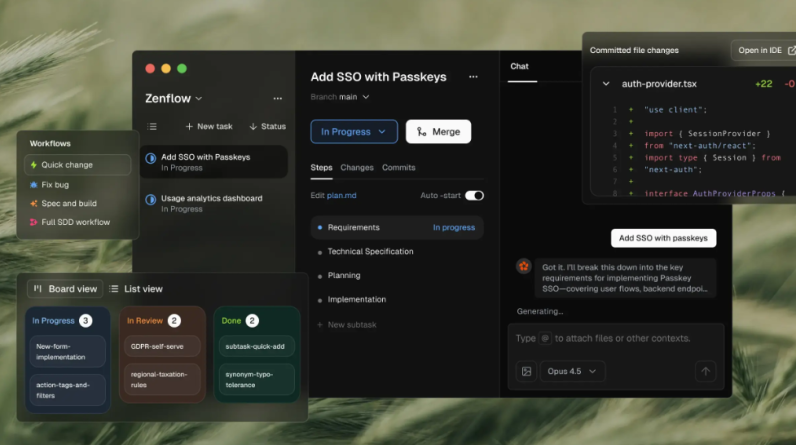
Artificial intelligence (AI) is often perceived as an autonomous technological force, shaping industries, labor markets, and the future of work. However, beneath the cutting-edge AI models that power chatbots, recommendation systems, and self-driving cars, lies an invisible global workforce performing essential data work to make AI function effectively. These workers, spread across multiple continents, annotate, verify, and refine the data that trains AI models. While AI development is typically associated with elite engineers and researchers, the reality is that much of the groundwork is outsourced to low-paid, precarious labor in the Global South.
A recent study titled “Where Does AI Come From? A Global Case Study Across Europe, Africa, and Latin America”, authored by Paola Tubaro, Antonio A. Casilli, Maxime Cornet, Clément Le Ludec, and Juana Torres Cierpe, and accepted for publication in New Political Economy (2025), explores the supply chains of AI production. By analyzing AI-related data work in France, Madagascar, and Venezuela, the research exposes the hidden inequalities, outsourcing practices, and economic dependencies that fuel the AI industry. The study reveals that while AI is often heralded as an economic disruptor, its production follows longstanding patterns of exploitation, offshoring, and exclusion – deepening global labor inequalities.
The global assembly line of AI: Data work as the foundation of AI development
Despite widespread discussions on AI replacing human labor, the reality is that AI itself relies heavily on human labor. The process of training AI models involves three primary functions:
- AI Preparation – Workers generate and annotate datasets that serve as the foundation for machine learning models. This includes tasks such as image tagging, transcribing audio, and labeling text.
- AI Verification – Once an AI model is trained, workers validate its outputs to ensure accuracy. This includes tasks such as checking search engine results, evaluating voice assistant responses, and manually reviewing AI-generated content.
- AI Impersonation – In some cases, human workers act as stand-ins for AI, performing tasks that algorithms struggle with, while maintaining the illusion of full automation. This is particularly common in automated surveillance, customer support, and content moderation.
The study finds that these functions are deeply embedded in a global network of outsourced labor, where AI production is shaped by economic power imbalances between the Global North and South. AI data work is not performed within Silicon Valley’s high-tech campuses but is contracted out through complex, multi-layered supply chains, where large tech firms outsource low-wage tasks to freelancers, subcontractors, and digital platforms.
Outsourcing and offshoring: AI’s global labor divide
The study highlights that AI data work is structured along two major labor trends: outsourcing and offshoring. In France, a key hub for AI research, data work is often performed by highly educated but precariously employed freelancers who work through digital platforms. These workers engage in microtasks such as voice recording, image annotation, and document anonymization. The research finds that while many workers in France engage in data work for supplemental income, the wages are too low for full-time employment.
In Madagascar, the AI supply chain operates through small and medium-sized firms that contract workers for long-term data labeling and verification projects. Unlike the platform-based gig work seen in France, Malagasy workers typically work in offices under formal contracts, but with lower wages and limited labor protections. These firms cater to French AI companies, capitalizing on historical economic ties between France and its former colony.
The most precarious AI labor conditions are found in Venezuela, where economic instability has driven thousands of workers to perform microtasks for international AI platforms. Venezuelan data workers are paid the lowest wages and often perform tasks such as captcha-solving, click-farming, and facial recognition dataset creation. These workers, operating in an extremely competitive environment, rely on social networks and informal labor communities to navigate an unpredictable, exploitative digital economy.
The findings reveal that AI supply chains mirror traditional global value chains, where low-wage countries provide raw materials or labor for high-value industries in wealthier nations. The AI industry, despite being seen as a frontier of digital innovation, relies on the same economic inequalities that have historically shaped global trade.
The hidden costs of AI: Exploitation, exclusion, and power asymmetries
While AI is often associated with efficiency and automation, the study underscores that AI production is deeply rooted in labor exploitation and economic disparity. One of the major findings is that AI’s labor supply chains reinforce exclusion – those who perform the most crucial data work are also the most disconnected from AI’s economic benefits.
Workers in France have better access to legal protections and higher wages but remain isolated, disempowered, and unaware of their collective role in AI’s development. In Madagascar, workers benefit from more structured employment, but they remain underpaid and dependent on foreign AI firms, which dictate working conditions. Meanwhile, Venezuelan data workers face extreme precarity, engaging in low-value digital piecework that leaves them vulnerable to market volatility, platform policy changes, and exploitative pay structures.
Another key issue is AI impersonation, where workers unknowingly perform tasks under the guise of automation. The study uncovered cases where Malagasy workers were hired to monitor retail store surveillance cameras, supposedly operated by AI systems. Instead of AI autonomously identifying shoplifters, human workers manually flagged suspicious activity while clients believed they were using an automated security solution. This practice, known as “deceptive AI,” is widespread in industries such as customer service, surveillance, and content moderation, where human labor is concealed behind the illusion of artificial intelligence.
Despite their indispensable role, data workers receive low wages, minimal recognition, and little career mobility. AI’s economic gains are concentrated among tech giants, venture capitalists, and policymakers, while the people building the datasets that power AI remain in the shadows.






